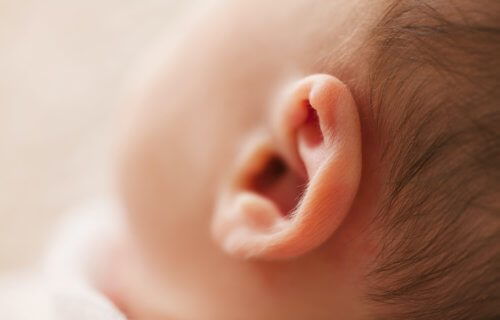TEL AVIV, Israel — Hearing loss is the most form of sensory disability in the world. Of the millions who deal with this issue, about half the cases of deafness are the result of genetic mutations. Now, a team from Israel says they have created a groundbreaking treatment that may restore hearing for children born deaf.
Researchers from Tel Aviv University (TAU) have devised a new gene therapy which delivers genetic material into the cells of the inner ear. The material then “replaces” the mutation, allowing cells in the ear to work normally again. In studies on baby mice, the team successfully prevented gradual hearing loss in pups which had a genetic mutation causing deafness.
According to the World Health Organization (WHO), there are over 460 million people in the world who suffer from disabling hearing loss. Around 34 million of these patients are children. WHO also expects these numbers to nearly double by the year 2050.
Many genes make hearing loss hereditary
The study finds one in every 200 children is born with impaired hearing. One in 1,000 are born completely deaf. Making the Israeli team’s task even more difficult, there are around 100 different genes connected to deafness which are passed down through a family line.
“In this study we focused on genetic deafness caused by a mutation in the gene SYNE4 – a rare deafness discovered by our lab several years ago in two Israeli families, and since then identified in Turkey and the UK as well,” Professor Karen Avraham of TAU’s Department of Human Molecular Genetics and Biochemistry explains in a university release.
“Children inheriting the defective gene from both parents are born with normal hearing, but they gradually lose their hearing during childhood. The mutation causes mislocalization of cell nuclei in the hair cells inside the cochlea of the inner ear, which serve as soundwave receptors and are essential for hearing. This defect leads to the degeneration and eventual death of hair cells.”
Researchers created a harmless synthetic virus which delivers the genetic material into the patient’s ear. The material is a normal and unmutated copy of the defective SYNE4 gene causing deafness in both the mice and those families.
“We injected the virus into the inner ear of the mice, so that it entered the hair cells and released its genetic payload. By so doing, we repaired the defect in the hair cells and enabled them to mature and function normally,” says Shahar Taiber, a study co-author and one of Prof. Avraham’s students.
A promising start for curing deafness
Study authors began administering the gene therapy on mice soon after birth. They then monitored how well the treatments worked using physiological and behavioral tests.
“The findings are most promising,” reports study collaborator Professor Jeffrey Holt from Boston Children’s Hospital and Harvard Medical School. “Treated mice developed normal hearing, with sensitivity almost identical to that of healthy mice who do not have the mutation.”
The team is now working on creating similar gene therapy treatments which target other genetic mutations causing deafness.
“This is an important study that shows that inner ear gene therapy can be effectively applied to a mouse model of SYNE4 deafness to rescue hearing,” explains Professor Wade Chien from Johns Hopkins School of Medicine. “The magnitude of hearing recovery is impressive. This study is a part of a growing body of literature showing that gene therapy can be successfully applied to mouse models of hereditary hearing loss, and it illustrates the enormous potential of gene therapy as a treatment for deafness.”
Chien is not part of the TAU study.
The study appears in the journal EMBO Molecular Medicine.
